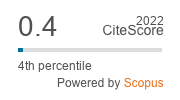Evaluation of cauliflower genotypes and eco-friendly molecules for management of Diamond back moth, Plutella xylostella (Linnaeus) (Lepidoptera, Yponemeutidae) and their safety to natural enemies
DOI:
https://doi.org/10.33307/entomon.v48i2.900Abstract
Four late season cauliflower genotypes namely Pusa Snowball 1 (PSB 1), Pusa Snowball K1 (PSB K1), Pusa Snowball K25 (PSB K25) and Plantsman Snowball (PMS) were evaluated for their resistance to Diamond Back Moth (DBM), Plutella xylostella (Linnaeus), during 2018-19. Among the genotypes screened PSB1 and PMS were comparatively less susceptible. Biochemical analyses of leaves from 85 days old healthy plants showed that PMS had higher phenol content (89.9 mg 100g-1) which on par with PSB-1 with 81.43 mg 100g-1 of leaf. This was followed by PSB K25 and PSB K1 with 69.5 and 54.23 mg 100g-1 respectively. The varieties with higher phenol content offered more resistance to DBM. Protein content of the plant showed no correlation with DBM infestation. Foliar application of spinosad (45 % SC @ 56.25 g ai ha-1 +NSKE 2.5 %) recorded a higher reduction (94.40 %) of DBM population over control, with comparatively higher number of syrphids and coccinellids indicating its safety to natural enemies.


